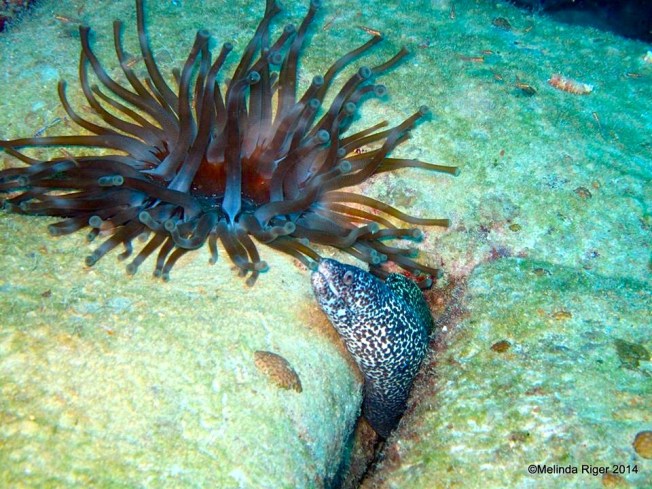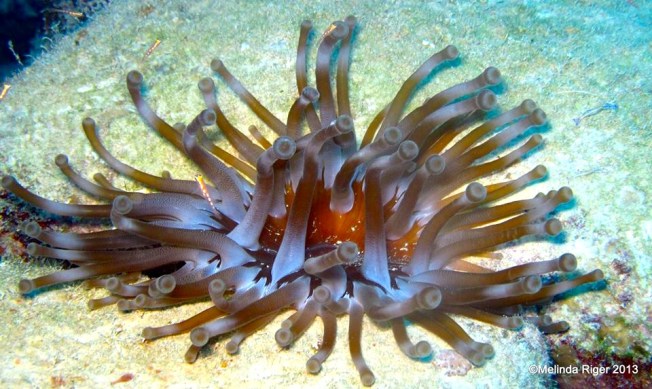MAKE FRIENDS WITH ANEMONE: BAHAMAS REEF LIFE
The giant anemone is found in the shallow reefs and lagoons of the Caribbean and western Atlantic. These are, of course, animals and not plants, with many tentacles that surround their mouth. They attach themselves to rock or in rock crevices, mooring themselves securely against the swell of the waves.
Giant anemone with ‘Speckles’, a spotted moray eel
ARE THEY USEFUL?
One important feature of a healthy anemone population is the shelter they give to certain small fish and cleaner shrimp species. They act as bases for FISH CLEANING activities, a vital role in the undersea community.
HOW DO THEY HAVE… ERM… SEX?
The sex lives of anemones seems particularly complicated (as they would doubtless think about humans). Cutting to the chase, reproduction involves the synchronous spawning of eggs and sperm, with fertilisation occurring in the surrounding water. The fertilised eggs become larval and spread in the water column, which increases their chances of survival. They settle on the BENTHOS, where they develop a “pedal leg” (rather in the manner of a gastropod) which in due course they will use to move from A to… A plus a very short distance.
These anemones come in many colours. The tentacles often have tips of various hues, and are the only free-floating part of the animal. The body is safely attached to the rock.






Pingback: Marine animals helping each other, video | Dear Kitty. Some blog
Pingback: Curaçao Caribbean marine life, video | Dear Kitty. Some blog
Amazing creatures! Such beauty.
LikeLiked by 1 person
That was quick – I’d only just posted it! Thanks for calling in at Rolling Harbour.
LikeLiked by 1 person
I went through the Reader and saw a picture 🙂 I opened the post and – oh joy – there were more pictures 🙂 I love the Ocean.
LikeLiked by 1 person
I liked this post before I even read it just because of the title
LikeLiked by 1 person
Well, not exactly your speciality, puns, but a sort of misfired play on a word. It doesn’t really stand logical scrutiny, but you can’t have everything!
LikeLike
Oh I never logically scrutinize. Rots the brain
LikeLike